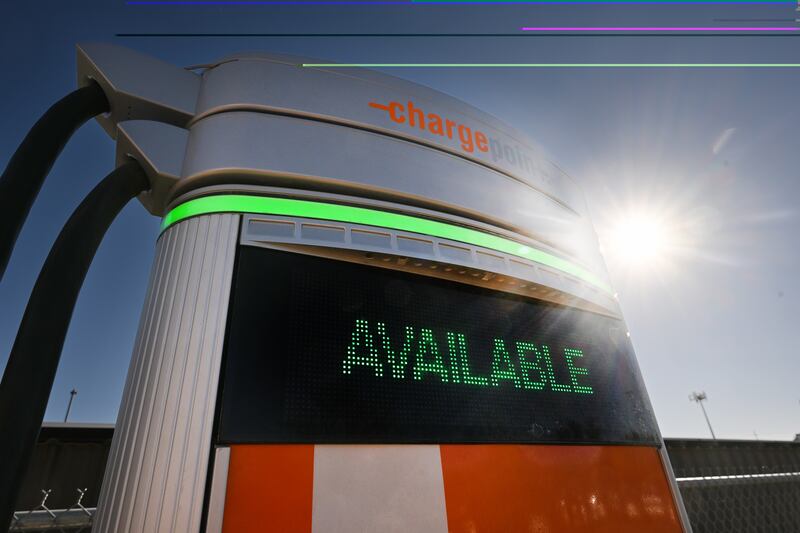Utah transportation officials announced Tuesday that they're allocating grants that help build 15 new fast-charging sites for electric vehicles across the state, as they look to match growing demand for the new infrastructure.
The new stations are part of about $17.5 million that is being invested toward the state's goal of having a fast-charging site every 50 miles along its interstate highways, according to the Utah Department of Transportation. Agency officials say that the additional stations will double the state's fast charge site capacity by the end of 2024.
The new stations selected will be by freeways and highways in or around:
• Bluff, San Juan County (Rocky Mountain Power)
• Coalville (Rocky Mountain Power)
• Cove Fort (Rocky Mountain Power)
• Delle, Tooele County (Utah.Energy)
• Fillmore (Maverik)
• Ivie Creek, Sevier County (Rocky Mountain Power)
• Layton/Ogden (Rocky Mountain Power)
• Moab (Rocky Mountain Power)
• Monticello (Maverik)
• Nephi (Tesla)
• Price/Wellington (Maverik)
• Snowville, Box Elder County (Pilot Flying J Travel Center)
• Thompson Springs, Grand County (Utah.Energy)
• Tie Fork, Utah County (Rocky Mountain Power)
• Tremonton (Maverik)

"The future is coming and these 15 new fast-charging sites will ensure Utah will be ready for it," said UDOT Executive Director Carlos Braceras in a statement. "Building out the statewide charging network really opens the door to let Utahns choose to travel where they want, when they want (and) in the way they want."
The investment in electric vehicle stations has to do with growing trends when it comes to electric vehicles.
A little more than 25,500 electric vehicles and over 9,000 plug-in hybrid vehicles were registered in Utah by the start of this year, according to the Utah State Tax Commission. While this is still a very small fraction of all the vehicles on Utah roads at the moment, UDOT officials point out that Utah averaged about 48% in year-over-year EV ownership growth since 2015.
Many car manufacturers have also signaled that they intend to switch to entirely electric over the next few decades, which would drastically increase the demand for charging stations. Lyle McMillan, UDOT's strategic investments director, says that's why Utah is looking to jump out ahead of the trend.
"If you drive an electric vehicle, there's something called 'range anxiety,' which is very real," he said. "More fast (charging) sites means you can get in, you can charge up and you can get where you want to go faster."
Utah is set to receive about $36 million in federal funding from the National Electric Vehicle Infrastructure Formula Program for more electric vehicle infrastructure in the coming years. That comes with a minimum 20% private match, which the state and private businesses are footing to invest a total of about $43 million.
UDOT officials say the state is still in the first $17.5 million phase of the program, which involves no state taxpayer dollars. It received 75 applications from private companies seeking one of the 15 locations. All of the companies picked are covering some of the cost of adding the new stations.

All of the sites are expected to have 97% uptime, which means it will be quicker for cars to recharge, McMillan said. Once the new sites go online, EV drivers traveling along Utah's interstates, U.S. 6 and U.S. 191 will have easier access to fast-charging sites by the end of 2024.
McMillan said that's good not just for Utahns, but electric vehicle drivers traveling into Utah to visit its natural splendor or for any other reason.
"It's exciting because people are finally being able to get where they want to go using the mode of transportation they want to use," he said. "We don't really want to pick or choose who wins, we just want to make sure that anybody gets to go wherever they want to go using whatever mode of transportation they have."
Contributing: Karah Brackin

